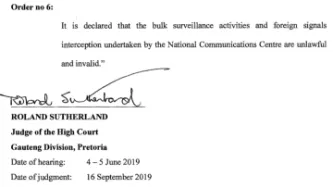The Five Eyes Fact Sheet

With the launch of the "Eyes Wide Open" project, Privacy International has put together a fact sheet about the secretive Five Eyes alliance. Consider this a guide to the secret surveillance alliance that has infiltrated every aspect of the modern global communications system.
- Beginning in 1946, an alliance of five English-speaking countries (the US, the UK, Australia, Canada and New Zealand) developed a series of bilateral agreements over more than a decade that became known as the UKUSA agreement, establishing the Five Eyes alliance for the purpose of sharing intelligence, primarily signals intelligence (SIGINT).
- While almost 70 years old, the arrangement is so secretive that the Australian prime minister reportedly wasn’t informed of its existence until 1973 and no government officially acknowledged the arrangement by name until 1999.
- Under the agreement interception, collection, acquisition, analysis, and decryption is conducted by each of the State parties in their respective parts of the globe, and all intelligence information is shared by default.
- The agreement is wide in scope and establishes jointly-run operations centres where operatives from multiple intelligence agencies of the Five Eyes States work alongside each other.
- Tasks are divided between SIGINT agencies, ensuring that the Five Eyes alliance is far more than a set of principles of collaboration. The level of cooperation under the agreement is so complete that the national product is often indistinguishable.
- Together the Five Eyes are collaborated and developed specific technical programmes of collection and analysis. Some examples include:
ECHELON: a system that collects and processes information derived from intercepting civil satellite communications
THINTHREAD: an analysis tool that creates graphs showing relationships and patters that can tell analysis which targets they should look at and which calls they should listen to
TEMPORA: a programme that collects intelligence via undersea fibre optic cable taps
XKEYSCORE: an analytic framework that indexes email addresses, file names, IP addresses, cookies, phone numbers and metadata, and enables a single search to query a three-day rolling buffer of all unfiltered data stored at 150 global sites
- Despite rumours of a “no-spy pact”, there is no prohibition on intelligence-gathering by Five Eyes States on the citizens or residents of other Five Eyes States, although there is a general understanding that citizens will not be directly targeted and where communications are incidentally intercepted there will be an effort to minimize the use and analysis of such communications by the intercepting State.
- In addition to the Five Eyes alliance, a number of other surveillance partnerships exist:
9 Eyes: the Five Eyes, with the addition of Denmark, France, the Netherlands and Norway;
14 Eyes: the 9 Eyes, with the addition of Germany, Belgium, Italy, Spain and Sweden;
41 Eyes: all of the above, with the addition of the allied coalition in Afghanistan;
Tier B countries with which the Five Eyes have “focused cooperation” on computer network exploitation, including Austria, Belgium, Czech Republic, Denmark, Germany, Greece, Hungry, Iceland, Italy, Japan, Luxembourg, Netherland, Norway, Poland, Portugal, South Korea, Spain, Sweden, Switzerland and Turkey;
Club of Berne: 17 members including primarily European States; the US is not a member;
The Counterterrorist Group: a wider membership than the 17 European States that make up the Club of Berne, and includes the US;
NATO Special Committee: made up of the heads of the security services of NATO member countries;



